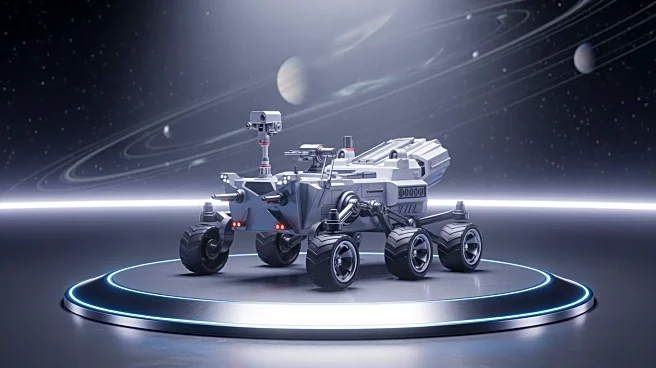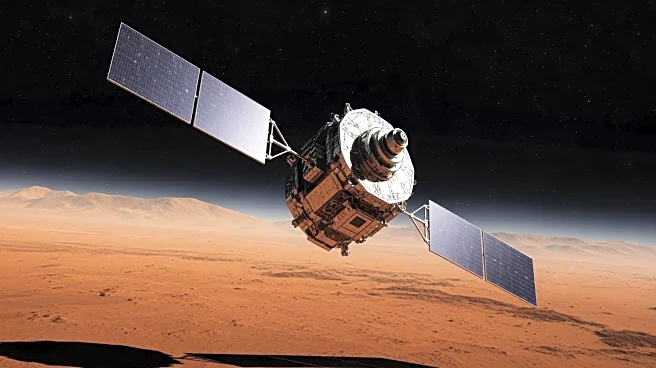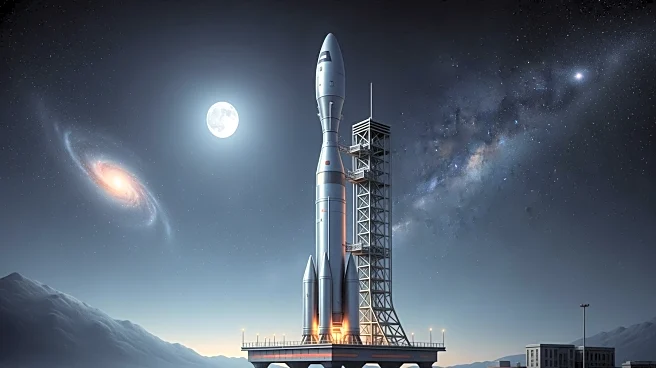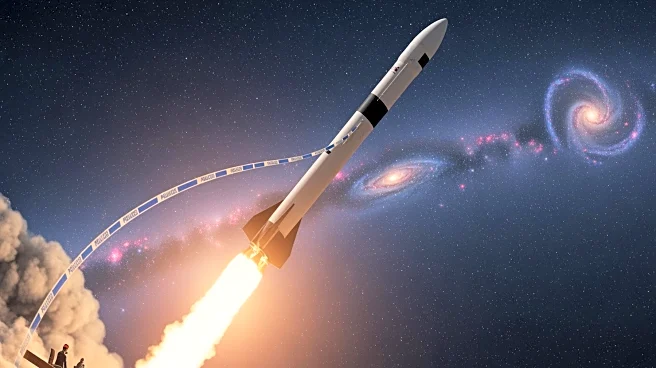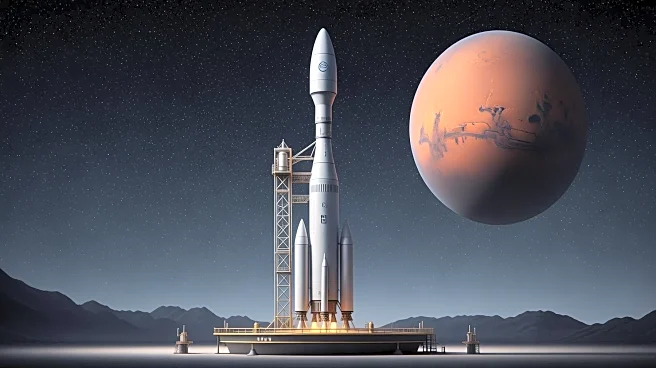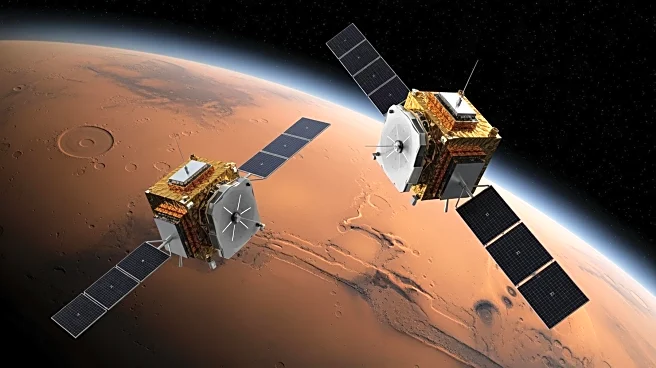What's Happening?
NASA's ESCAPADE mission, aimed at studying Mars' upper atmosphere, faced potential delays and cancellation due to issues with its launch vehicle, Blue Origin's New Glenn rocket. The mission, consisting
of two identical spacecraft, was initially planned to launch directly to Mars but now employs a unique trajectory involving a loiter orbit around Earth. This approach allows the mission to wait for optimal alignment between Earth and Mars, expected in November next year. The New Glenn rocket, which is yet to be certified by NASA or the US Space Force, offers a cost-effective launch solution, with NASA paying $20 million for the service. Despite the risks associated with the rocket's second flight, NASA is proceeding with the launch, scheduled for November 12, 2025.
Why It's Important?
The ESCAPADE mission represents a significant advancement in interplanetary exploration, utilizing innovative orbital dynamics to overcome launch window challenges. The decision to use Blue Origin's New Glenn rocket, despite its lack of certification, underscores the importance of cost-effective solutions in space missions. This approach allows NASA to allocate resources efficiently, enabling the continuation of scientific research on Mars' atmosphere. The mission's success could pave the way for future collaborations between NASA and private space companies, promoting innovation and reducing costs in space exploration. However, the reliance on a relatively untested launch vehicle highlights the risks involved in such partnerships.
What's Next?
The ESCAPADE mission is set to launch on November 12, 2025, with the spacecraft entering a loiter orbit around Earth before heading to Mars. The mission's success will depend on the performance of the New Glenn rocket and the effectiveness of the orbital dynamics strategy. If successful, the mission could provide valuable insights into Mars' atmospheric interactions with solar wind, contributing to our understanding of the planet's climate and potential habitability. The collaboration between NASA and Blue Origin may also lead to further partnerships, enhancing the role of private companies in space exploration.
Beyond the Headlines
The ESCAPADE mission highlights the growing role of private companies in space exploration, with Blue Origin providing a cost-effective launch solution for NASA. This collaboration reflects a broader trend towards increased privatization in the space industry, potentially leading to more competitive pricing and innovative solutions. The mission's reliance on orbital dynamics also underscores the importance of advanced trajectory analysis in overcoming launch window challenges, demonstrating the potential for creative problem-solving in space missions. As private companies continue to play a larger role in space exploration, the balance between cost, risk, and scientific value will remain a critical consideration.
